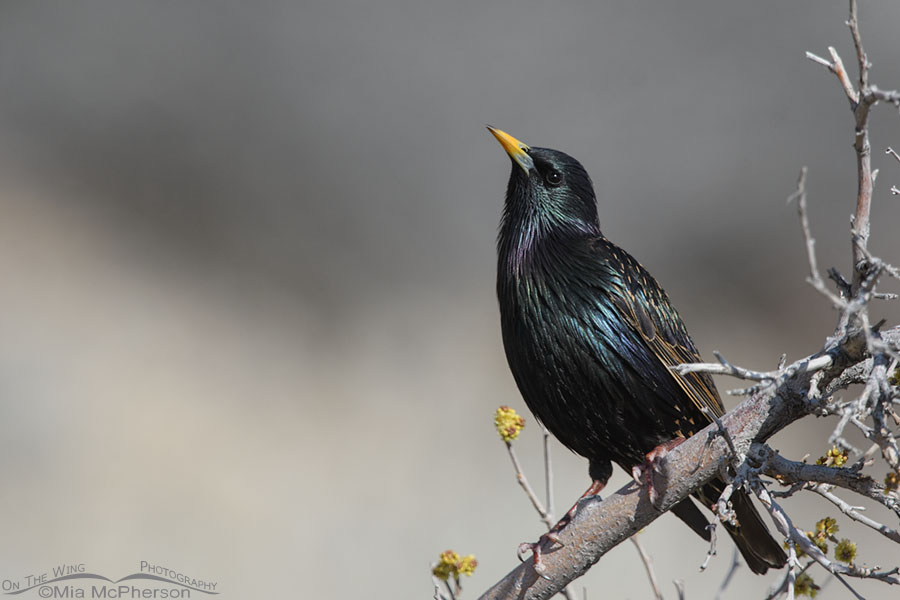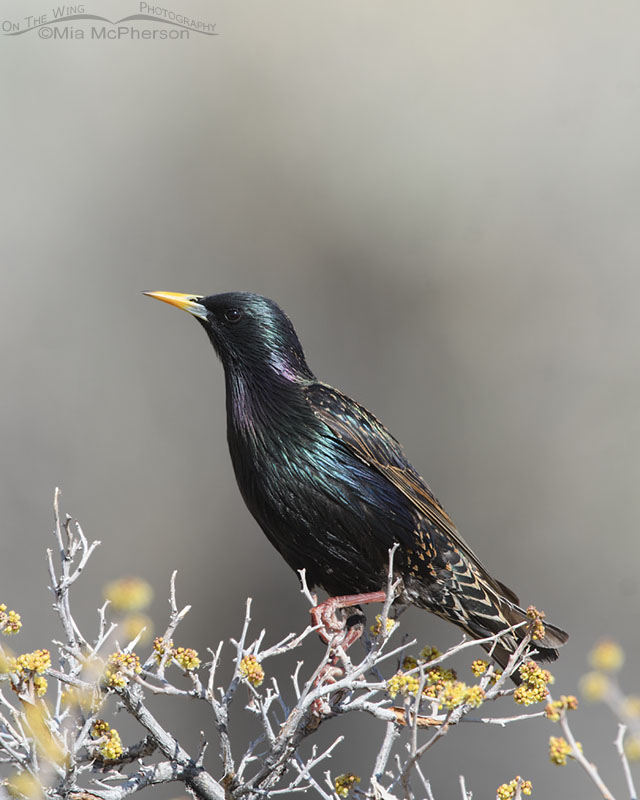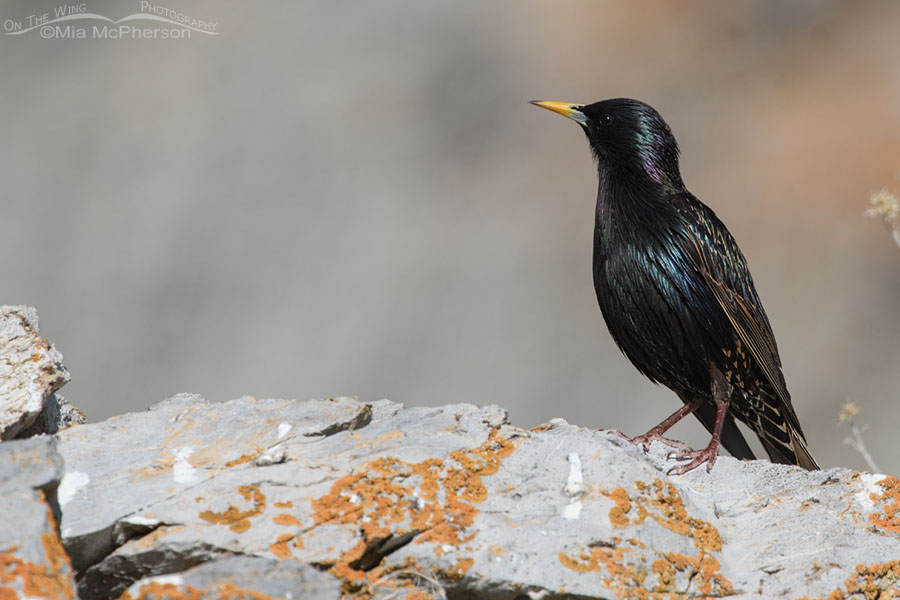 Adult European Starling in spring – Nikon D500, f7.1, 1/1000, ISO 500, +0.3 EV, Nikkor 500mm VR with 1.4x TC, natural light
Adult European Starling in spring – Nikon D500, f7.1, 1/1000, ISO 500, +0.3 EV, Nikkor 500mm VR with 1.4x TC, natural light
Two days ago I was able to take photos of a male European Starling on three different perches just a few seconds apart in northern Utah. In this first photo the starling was perched on a sumac branch where he had been calling and singing. It is breeding season for European Starlings and they make some of the most interesting calls and songs at this time of the year.
By the way, these birds are called Common Starlings in Europe.
 European Starling perched on a budding Fragrant Sumac – Nikon D500, f7.1, 1/500, ISO 500, +0.3 EV, Nikkor 500mm VR with 1.4x TC, natural light
European Starling perched on a budding Fragrant Sumac – Nikon D500, f7.1, 1/500, ISO 500, +0.3 EV, Nikkor 500mm VR with 1.4x TC, natural light
The male European Starling lifted off from the first perch to land on another budding Fragrant Sumac shrub. I liked how the cliff face in the background created a natural cameo effect behind the bird in this photo.
This photo also shows a bluish hue to the base of his bill which during the breeding season indicates that this starling is a male. The rest of the year I wouldn’t even attempt to identify the gender of this species. The base of the bill of female European Starlings during the breeding season is pinkish.
 European Starling perched on a lichen encrusted boulder – Nikon D500, f7.1, 1/1600, ISO 500, +0.3 EV, Nikkor 500mm VR with 1.4x TC, natural light
European Starling perched on a lichen encrusted boulder – Nikon D500, f7.1, 1/1600, ISO 500, +0.3 EV, Nikkor 500mm VR with 1.4x TC, natural light
The starling flew from the sumac shrub to a nearby lichen encrusted boulder which is when I took this last photo of him.
The starlings in the desert habitat where I photographed this male use cracks and small openings in the nearby cliff faces for nesting cavities.
I know that these starlings aren’t loved by many people because they are introduced and cause problems for our native birds. I can’t and won’t blame the birds for being here, that blame falls directly on the people that brought them to our country many years ago.
Life is good.
Mia
Click here to see more of my European Starling photos plus facts and information about this species.


They are beautiful birds. We have them too. Also introduced. And also loathed by some.
Wonderful detail and color capture! I always appreciate your narrative with interesting facts about your subject.
Beautiful. They are actually great insect control, they probe into soil, bark, bushes, thatch looking for a morsel . They are also such great mimics, they have had me looking for a nonexistent bird they are imitating a call from, for weeks one year, we had a duck quaking in our back yard. I do like them but not when they devour my suet in less than an hour.